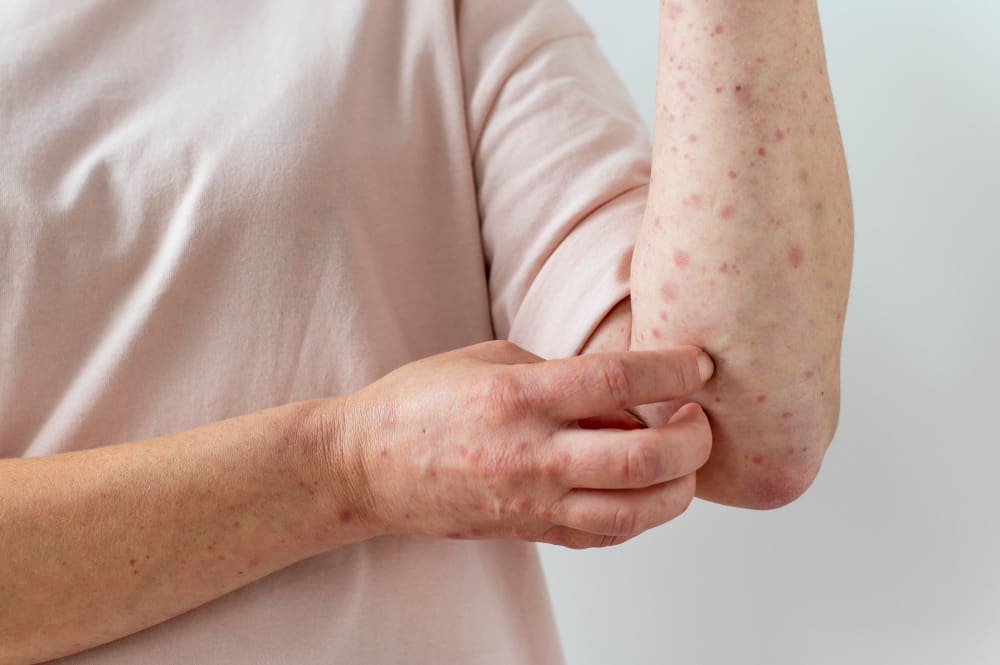Last Updated on November 3, 2025 by mcelik

At Liv Hospital, we are committed to providing top-notch care for patients with autoimmune conditions. Autoimmune diseases happen when the body’s immune system attacks its own cells, tissues, and organs. With over 100 recognized conditions, it can be tough to understand and diagnose these diseases.
We dive into the wide range of autoimmune disorders. This includes well-known conditions like rheumatoid arthritis and lupus, as well as rare ones like Stiff Person Syndrome and Goodpasture’s syndrome. Our aim is to offer a helpful resource for those looking to grasp the complexities of these conditions.

Autoimmune disorders are becoming more common around the world. They are a big problem for health globally. It’s important to learn more about these complex conditions and their effects worldwide.
Autoimmune diseases happen when the body’s immune system attacks itself. This is due to a mix of genetic, environmental, and hormonal factors. Genetic predisposition is a big factor, with some genes making you more likely to get an autoimmune disease. Environmental factors like infections, toxins, and diet also play a role.
The way genetics and environment work together is key to understanding these diseases. For example, a study on monozygotic twins found that while genetics matter, they don’t decide everything. The twins’ disease rates aren’t always the same.
Autoimmune diseases are widespread and getting more common. About 5-10% of the world’s population has one. The number of new cases is going up, with some groups seeing a 3% increase each year.
| Autoimmune Disease | Estimated Prevalence | Annual Incidence Rate |
|---|---|---|
| Rheumatoid Arthritis | 0.5-1% | 20-50 per 100,000 |
| Type 1 Diabetes | 0.3-0.5% | 15-30 per 100,000 |
| Lupus | 0.02-0.05% | 1-5 per 100,000 |
The growing number of autoimmune diseases is a big challenge for healthcare. Knowing what causes this increase is key to finding better ways to prevent and treat these diseases.

Autoimmune diseases are a wide range, with over 100 known conditions. These diseases happen when the body’s immune system attacks its own cells, tissues, and organs. We will list these conditions, sorted by how common they are.
The most common autoimmune diseases affect a lot of people. These include:
These diseases are often diagnosed and have a big impact on people’s lives.
Moderately common autoimmune conditions are less frequent but notable. Examples include:
These conditions show how autoimmune diseases can affect people in different ways.
Less common autoimmune diseases are rare but significant. Some examples are:
These diseases need accurate diagnosis and treatment to help patients.
New autoimmune disorders are being found as research improves. Some recent ones include:
These new disorders show how our understanding of autoimmune diseases is growing.
Exploring autoimmune diseases shows they are diverse and complex. The table below summarizes some key diseases:
| Disease Category | Examples | Primary Affected Areas |
|---|---|---|
| Most Common | Type 1 Diabetes, Rheumatoid Arthritis, Lupus | Pancreas, Joints, Multiple Organs |
| Moderately Common | Psoriasis, Vitiligo, Guillain-Barré Syndrome | Skin, Nervous System |
| Less Common | Goodpasture’s Syndrome, Autoimmune Hemolytic Anemia | Lungs, Kidneys, Blood Cells |
| Newly Recognized | IgG4-related disease, NMDA receptor encephalitis | Multiple Organs, Brain |
Experts say, “Understanding autoimmune diseases is key to better treatments.”
“The complexity of autoimmune diseases requires a multifaceted approach to diagnosis and treatment, stressing the need for ongoing research and support for patients.”
Autoimmune diseases affect many parts of the body, impacting millions globally. We’ll look at how these conditions affect different areas, from the skin to the nervous system.
Autoimmune diseases can cause skin and connective tissue issues. For example, psoriasis and scleroderma are common. Psoriasis makes skin cells grow too fast, causing scales and red patches. Scleroderma makes skin and connective tissue hard and tight.
Autoimmune diseases like Crohn’s disease and ulcerative colitis affect the digestive system. They cause inflammation in the gut, leading to pain and diarrhea.
Autoimmune diseases can harm the endocrine system, as seen in type 1 diabetes. In this condition, the immune system attacks the pancreas’s insulin-making cells. This means patients need insulin to survive.
Conditions like multiple sclerosis and myasthenia gravis are autoimmune. Multiple sclerosis damages nerve coverings, while myasthenia gravis weakens muscles.
Selma Blair’s story with multiple sclerosis shows the challenges of diagnosing and living with these conditions.
| Body System | Autoimmune Diseases | Primary Symptoms |
|---|---|---|
| Skin and Connective Tissue | Psoriasis, Scleroderma | Skin lesions, hardening of skin |
| Digestive System | Crohn’s disease, Ulcerative Colitis | Abdominal pain, diarrhea |
| Endocrine System | Type 1 Diabetes | High blood sugar, insulin dependency |
| Neurological and Muscular | Multiple Sclerosis, Myasthenia Gravis | Numbness, muscle weakness |
Understanding autoimmune diseases by body system shows their complexity and variety. This knowledge is key for better treatments and patient care.
Inflammatory autoimmune diseases are a big group of immune disorders. They are caused by chronic inflammation. This happens because of genetics, environment, and immune system problems. We will look at different types of these diseases and how they affect the body.
Inflammatory bowel diseases (IBD) are a key example of these conditions. They affect the gut. Crohn’s disease and ulcerative colitis are the main types. These diseases cause chronic gut inflammation, leading to symptoms like pain, diarrhea, and weight loss.
Treatment for IBD includes anti-inflammatory meds and immunosuppressants. These help manage symptoms and get the disease into remission.
Vasculitis is inflammation of the blood vessels. It can harm organs and tissues. When it happens without a clear cause, like an infection, it’s called an autoimmune disease.
Vasculitis can be mild or very serious. It depends on the affected vessels and how bad the inflammation is. Types include giant cell arteritis and microscopic polyangiitis.
Rheumatic inflammatory conditions, like rheumatoid arthritis (RA), affect joints and tissues. RA is a chronic autoimmune disease. It causes pain, stiffness, and swelling in the joints.
If not treated, RA can lead to disability and deformity. Early treatment with DMARDs is key to managing RA and preventing damage.
There are many other inflammatory autoimmune diseases. Autoimmune hepatitis inflames the liver. Sarcoidosis causes inflammation in various organs with granulomas.
Each disease has its own challenges in diagnosis and treatment. Often, a team of doctors is needed to manage these conditions effectively.
In conclusion, inflammatory autoimmune diseases are a wide range of conditions. Understanding them is key to finding effective treatments. By recognizing the different ways these diseases manifest, we can better manage them and improve patient outcomes.
Common autoimmune diseases get a lot of attention, but rare ones face unique challenges. They need special care and a deep understanding to help patients.
Rare neurological autoimmune diseases harm the nervous system. They can cause a lot of suffering. Here are some examples:
Some rare autoimmune diseases affect blood vessels and the blood system. They can cause complex health issues.
Some autoimmune diseases affect many parts of the body. This makes diagnosis and treatment hard.
There are also very rare autoimmune diseases. They are uncommon but have a big impact.
It’s important for doctors to know about these rare diseases. This helps them give the right diagnosis and treatment. By learning more and supporting research, we can help those affected by these conditions.
It’s important to know how autoimmune diseases affect different groups of people. This knowledge helps us create better healthcare plans. Autoimmune diseases impact various populations in different ways, guiding us in how to diagnose, treat, and study them.
Many autoimmune diseases are more common in certain genders. For example, lupus and Sjögren’s syndrome often hit women harder. On the other hand, ankylosing spondylitis tends to affect men more. Understanding these gender differences is key to effective care.
Research points to hormonal, genetic, and environmental factors as possible reasons for these differences. These factors can influence how the immune system works in different genders.
The reasons for gender differences in autoimmune diseases are complex. Sex hormones, like estrogen, play a big role in the immune system. Estrogen can boost the immune response, which might explain why some diseases are more common in women.
Autoimmune diseases can strike at any age, but some are more common in certain age groups. For example, type 1 diabetes often starts in children and young adults. In contrast, rheumatoid arthritis usually develops in older adults. Knowing these patterns helps us find risk factors and predict when a disease might start.
The risk of autoimmune diseases increases with age, peaking in middle to late adulthood. This might be due to environmental exposures and the natural aging of the immune system.
Autoimmune diseases also vary by ethnicity and geography. For instance, multiple sclerosis is more common in European populations, while Behçet’s disease is more prevalent in Mediterranean and Asian populations. This suggests a strong genetic link to these diseases.
Environmental factors, like diet and lifestyle, also play a role in these geographic differences. Understanding these factors can help us prevent and manage these diseases better.
By studying the demographic patterns of autoimmune diseases, we can better understand their causes and develop more effective treatments. This knowledge is essential for improving healthcare for those with autoimmune conditions.
Autoimmune diseases are hard to diagnose because their symptoms can be similar to other conditions. They can show up in many ways. So, we need a detailed approach to figure them out.
To diagnose autoimmune diseases, doctors use several methods. Clinical evaluation is key. It includes a detailed medical history and physical check-up to spot signs of an autoimmune disorder.
Laboratory tests are also important. They help find specific antibodies and check for inflammation. Tests for organ function are used too.
Experts say diagnosing autoimmune diseases needs a lot of suspicion and knowledge. This shows why we need a detailed way to diagnose.
Diagnosing rare autoimmune diseases is even harder. They are not common and their symptoms can be vague. We need special tests and experience to find these diseases.
“Rare autoimmune diseases are often underdiagnosed or misdiagnosed, leading to delayed treatment and potentially severe consequences for patients.”
Finding autoimmune diseases early is key for better treatment and outcomes. Early diagnosis means starting treatment sooner. This can prevent long-term damage and improve life quality.
We need to make sure doctors and the public know about autoimmune disease signs. This helps get a diagnosis and treatment sooner. It’s all about better care for patients.
Managing autoimmune diseases needs a mix of treatments and lifestyle changes. It’s key to understand the complexity of these diseases. Each person’s care should be tailored to their needs.
Doctors often use medicines to control autoimmune diseases. These medicines can calm down the immune system or target inflammation. They help manage symptoms and slow disease growth.
Some common treatments include:
| Treatment Type | Examples | Use in Autoimmune Diseases |
|---|---|---|
| Corticosteroids | Prednisone, Methylprednisolone | Reduce inflammation, manage acute flare-ups |
| Immunosuppressants | Azathioprine, Cyclophosphamide | Suppress immune system activity, reduce disease activity |
| Biologics | TNF inhibitors (e.g., Etanercept), IL-17 inhibitors (e.g., Secukinumab) | Target specific inflammatory pathways, reduce disease activity |
New treatments and trials are changing how we fight autoimmune diseases. These include:
Joining clinical trials can give patients access to new treatments. It also helps advance disease management.
Lifestyle and complementary methods are also key in managing autoimmune diseases. These include:
By adding these approaches to a treatment plan, patients can better control their disease. This leads to a better quality of life.
Autoimmune diseases are a complex group of disorders. We’ve looked at how they develop, their prevalence, and how to diagnose and treat them. This shows we need a detailed approach to understand them.
The autoimmune diseases list has over 214 known conditions. These range from common diseases like rheumatoid arthritis to rare ones like neuromyelitis optica. Knowing the list of autoimmune disorders and who they affect is key for early detection and treatment.
Autoimmune illnesses affect many parts of the body, including the skin, digestive system, endocrine system, and more. Their complexity means we need ongoing research and education to help patients.
As we learn more about autoimmune diseases and their treatments, we can offer better care. It’s important to keep a detailed approach to diagnosis and treatment. This way, we can meet the unique needs of each condition in the autoimmune diseases list
Autoimmune diseases happen when the body’s immune system attacks itself. It targets its own cells, tissues, and organs.
Over 100 autoimmune diseases are recognized. Some sources say there are up to 214 known conditions.
Common ones include rheumatoid arthritis, lupus, type 1 diabetes, and multiple sclerosis.
Rare ones include Stiff Person Syndrome, Goodpasture’s syndrome, and certain vasculitis types.
Doctors use clinical evaluation, lab tests, and imaging studies to diagnose them.
Diagnosing rare conditions is tough. They have low prevalence and nonspecific symptoms. Specialized testing and experience are needed.
Treatments include conventional medicine, emerging therapies, and lifestyle changes.
Some can be managed well, but a cure is rare with today’s technology.
Disease prevalence varies by gender, age, ethnicity, and location.
Inflammation is key in many diseases. It causes tissue damage and symptoms.
Yes, new therapies and trials are being developed. They aim to improve treatment options.
Autoimmune diseases happen when the body’s immune system attacks itself. It targets its own cells, tissues, and organs.
Over 100 autoimmune diseases are recognized. Some sources say there are up to 214 known conditions.
Common ones include rheumatoid arthritis, lupus, type 1 diabetes, and multiple sclerosis.
Rare ones include Stiff Person Syndrome, Goodpasture’s syndrome, and certain vasculitis types.
Doctors use clinical evaluation, lab tests, and imaging studies to diagnose them.
Diagnosing rare conditions is tough. They have low prevalence and nonspecific symptoms. Specialized testing and experience are needed.
Treatments include conventional medicine, emerging therapies, and lifestyle changes.
Some can be managed well, but a cure is rare with today’s technology.
Disease prevalence varies by gender, age, ethnicity, and location.
Inflammation is key in many diseases. It causes tissue damage and symptoms.
Yes, new therapies and trials are being developed. They aim to improve treatment options.
References
Healthline. Autoimmune Disease: Types, Symptoms, Causes, and More. https://www.healthline.com/health/autoimmune-disorders
WebMD. Autoimmune Diseases: Causes, Symptoms, and Treatments. https://www.webmd.com/a-to-z-guides/autoimmune-diseases
Global Autoimmune Institute. A-Z Autoimmune Disease List. https://www.autoimmuneinstitute.org/resources/autoimmune-diseases-list/
Subscribe to our e-newsletter to stay informed about the latest innovations in the world of health and exclusive offers!
WhatsApp us